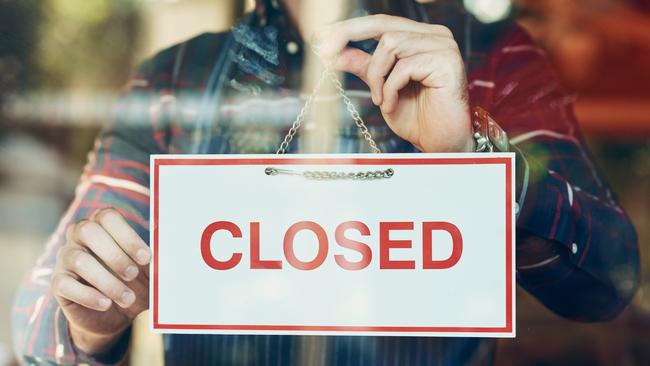Cost-of-living crisis means ‘crunch year’ for more small businesses: COSBOA
Small businesses are facing a ‘crunch year’ with expectations many will exit the market in the next 12 months.

Small businesses are facing a “crunch year” and there are expectations some will be forced to close as new figures reveal customers are reducing their spending.
As the cost-of-living challenge continues into 2024, the Council of Small Business Organisations’ year-in-review report revealed the number of businesses employing one to four employees had already shrunk by 3.5 per cent, while those employing five to 19 people had grown by just under 2 per cent.
The biggest growth was in companies that didn’t employ any staff, with non-employing businesses increasing by 2.3 per cent.
The report showed a reduction in average transaction size of almost 14 per cent for microbusinesses, more than 10 per cent for small businesses and 6 per cent for mid-market businesses.
COSBOA confirmed in its report – conducted with business technology platform Square – that there had been a reduction of spending in sectors that had been popular during the pandemic, such as home repair, leisure purchases and home gym set-ups, while consumers indicated they would spend more on food and drink, entertainment and travel experiences in 2024.
The peak body’s chief executive, Luke Achterstraat, said small businesses were feeling the impact of the cost-of-living crisis, warning there could be fewer operating by year’s end.
“Small-business owners are also consumers themselves … so they’ll be feeling the cost of living on the home front and on the shop floor as well,” Mr Achterstraat told The Australian.
“They’ve seen those energy costs, higher rent costs, higher insurance costs … in their personal life and then also professionally in their business.
“Do they actually reach a point where things are just so tough and so complex that they’re making a decision to cease trading?
“It’s going to be a crunch year. You might actually end up in a scenario where by the end of the year there’s less small businesses in the economy than they were at the beginning.”
The report showed almost 70 per cent of consumers indicated they had made cuts to discretionary spending in the last six months of 2023, with less than 10 per cent responding that they were spending more than usual.
Square Australia executive director Marco Lamantia said the figures made clear small businesses were “not out of the woods yet” when it came to the harsh economic conditions seen in 2023.
“(Businesses) are being proactive and turning to technology to help them do more with less,” Mr Lamantia said.
Anthony Albanese on Thursday said inflation was moderating due to the government’s policies.
“Whether it was the energy price relief plan or whether it be fee-free TAFE or other measures which have made a difference,” the Prime Minister said.
But Mr Achterstraat said the government still had levers it needed to pull to ensure small businesses could survive the next 12 months, with nearly half currently not turning a profit.
“I don’t think it’s sufficient to say ‘look, we’re getting inflation genie back in the bottle’. I think time will tell as to how that unfolds … I think the expectations are really high for more support for small business and what that looks like below in terms of deregulation and red tape reduction,” he said.
“I think there’s big opportunity for the government to put its money where its mouth is to really support small businesses.”
While Mr Albanese confirmed he had tasked Finance and Treasury to examine what further cost-of-living relief could be rolled out in the May budget, he would not be drawn on the form of such relief and who it may apply to.
Mr Achterstraat welcomed the review into the code of conduct for big supermarkets, launched by Mr Albanese, which he said was needed to level the playing field.








To join the conversation, please log in. Don't have an account? Register
Join the conversation, you are commenting as Logout